Chestnut Base Horse Coat Color

Basic Chestnut
All horse colors are built on a black or a chestnut base and different colors are achieved by dilution genes and color modifiers to provide the wide variety of colors and patterns in existence today.
A Few Chestnut Facts
- Chestnut horses have no black hairs, they have a red coat and red points
- Chestnut and sorrel are interchangable terms and the same genetically
- Colors range from dark reddish brown, to deep red to light red
- Mane and tail can achieve a sunstreaked look making it lighter than the body hairs
- Mane and tail can be almost black all the way to blonde and flaxen
Different Chestnut Shades
There is a rainbow of reds in the chestnut family, but most fall under one of three main categories.
Liver or Black Chestnut
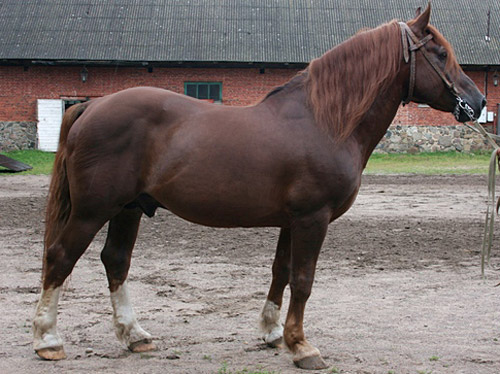
- Darkest red color
- Can be very dark, however hair will retain a red color
- Common in the morgan breed
- Can be confused with silver dapple
Chestnut / Red Chestnut / Sorrel
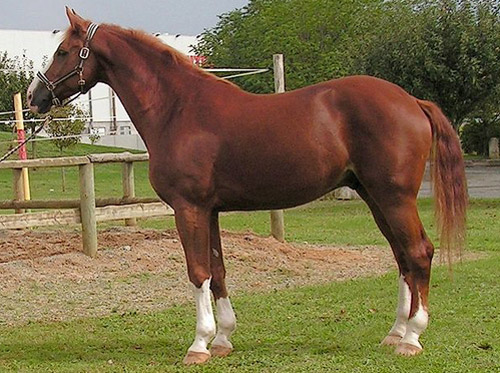
Image from Methos31
- Lighter red hairs
- Mane and tail can be very light in color
- Most common shade of chestnut
Light Blonde / Sandy Chestnut
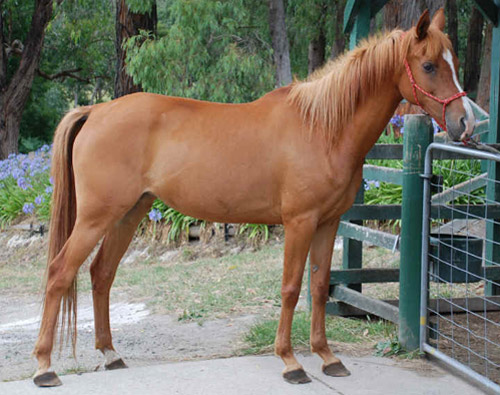
Image from Imoan Arabians
- Very pale red
- Mane and tail can be very light in color
Chestnut Dilutions
Chestnut horses can display a wide variety of colors when diluted, here are a few of them.
Red Dun
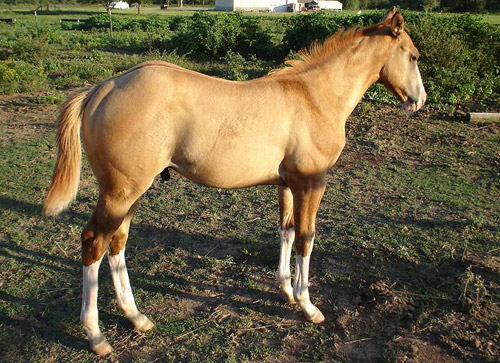
Chestnut base with a dun dilution gene.
Image from Kumana @ Wild Equines
Palomino
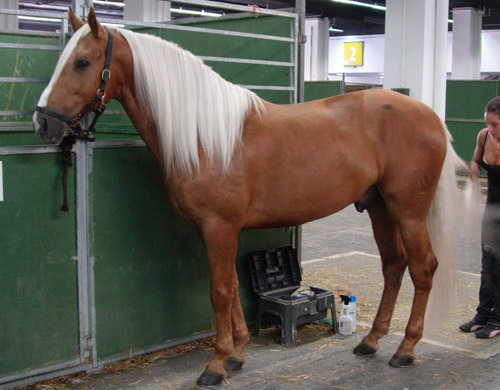
Chestnut base with a cream dilution gene.
Creamello
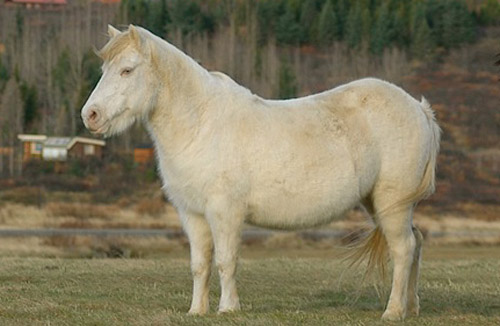
Chestnut base with a double dose of the cream dilution gene.
Image from Steven_Walling
Gold Champagne
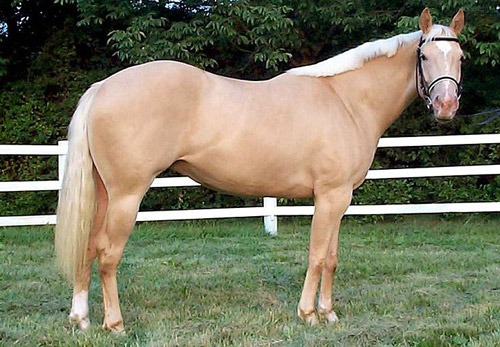
Chestnut base with a champagne dilution gene.
Image from Kersti_Nebelsiek
Chestnut Modifications
Most of the known modifiers affect the chestnut base, some of them are even exclusive to chestnut animals. Here are a few examples.
Mealy / Pangare
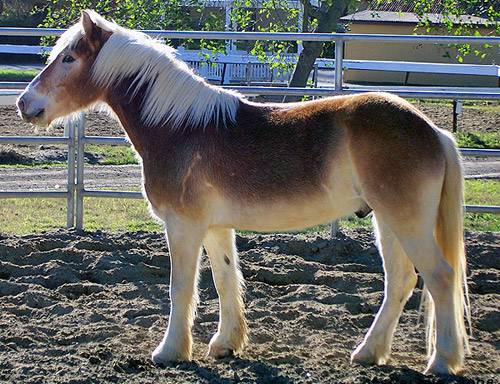
Chestnut base with a mealy / pangare gene.
Image from White Horse Productions
Sooty / Smutty
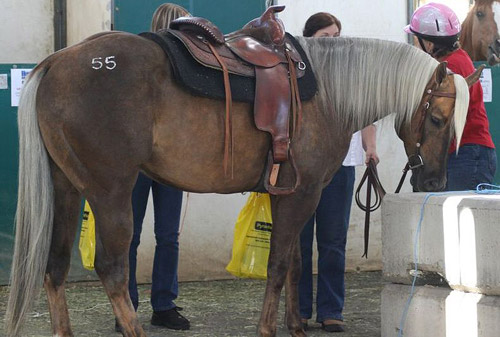
Chestnut base with a sooty / smutty gene.
Image from Just chaos
Flaxen
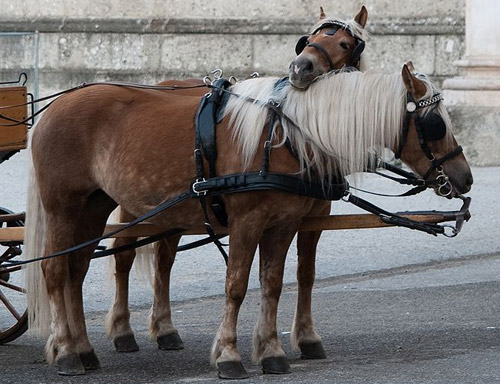
Chestnut base with a flaxen gene.
Image from Mihai Bojin
White Patterns
Chestnut horses can display all of the white patterns, creating an even wider variety of colors.
Appaloosa

Chestnut base with an appaloosa white pattern gene
Image from evelynbelgium
Skewbald Pinto / Paint
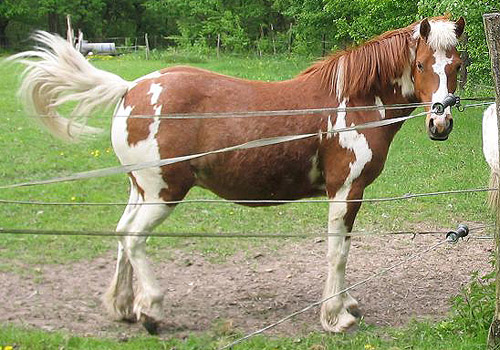
Chestnut base with a pinto / paint white pattern gene
Image from Lienhard_Schulz
Strawberry Roan
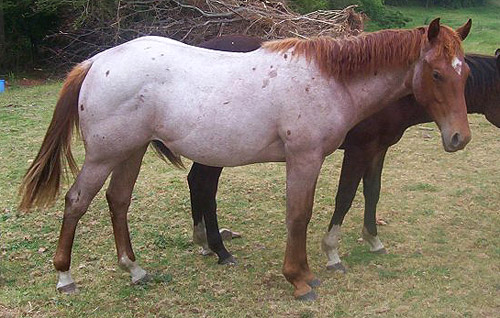
Chestnut base with a roan white pattern.
Image from Kumana @ Wild Equines
Black Base Horse Coat Color

Basic Black
All horse colors are built on a black or a chestnut base and different colors are achieved by dilution genes and color modifiers to provide the wide variety of colors and patterns in existence today.
A Few Black Facts
- The black gene occurs in most breeds
- Black horses have no brown or red hairs
- They have a black coat and black points
- The only white is in markings on face and legs
- Black horses do better in cold climates
- Dark hair absorbs heat from the sun making hot weather work difficult
- There are two types of black, fading & non-fading
Non-fading black

- Their coat never fades from sun, weather or work
- They are born black and remain black throughout their life
- Can be a smokey or blue black
Fading black
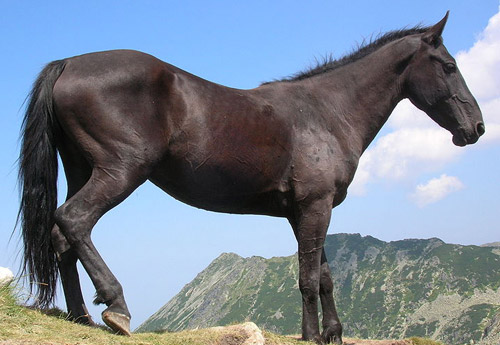
- Coat fades from sun and weather
- Usually born smokey or dark bay
- Cannot generally produce bay foal
- Also called ‘Barn Black’ because unless they are kept from the sun they will fade with age
Black Dilutions
Black horses can display a wide variety of colors when diluted, here are a few of them.
Grullo or Grulla (male – female)
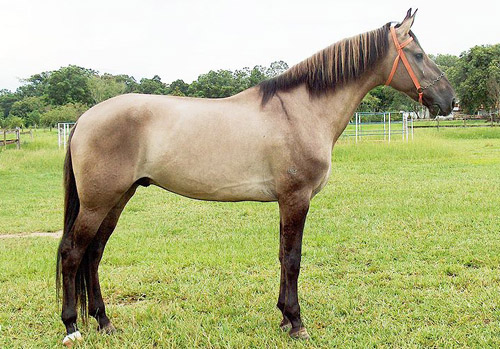
Black base with dun dilution gene
Image from Amazona
Smokey Black or Smokey Cream
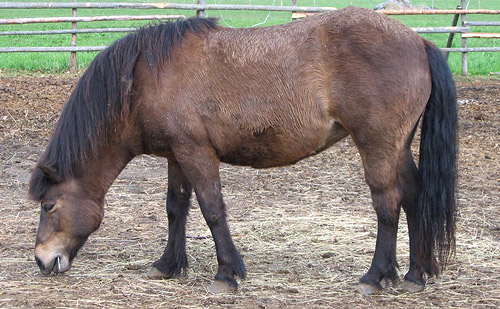
Black base with a cream dilution gene
Image from Liberty Walkers
Classic Champagne
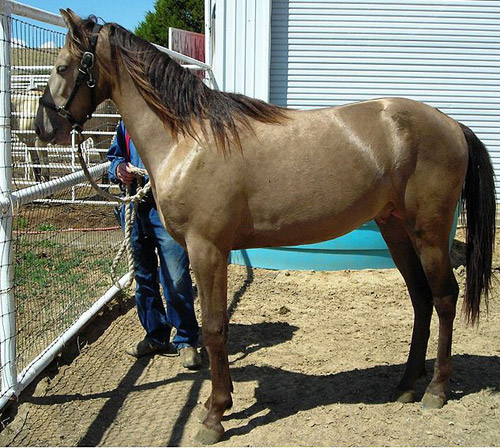
Black base with a champagne dilution gene
Image from Kersti_Nebelsiek
Silver Dapple or Chocolate Silver
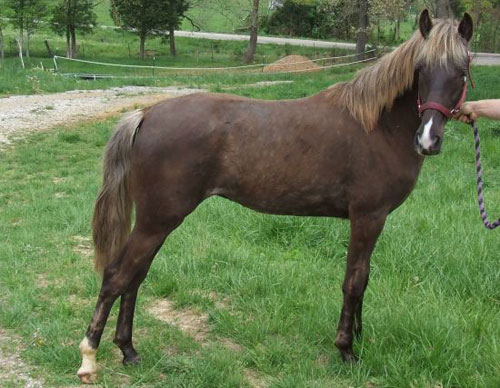
Black base with a silver dilution gene
Image credit Equine Now
Black Modifications
Not all modifiers have an affect on a black coat, here are a few examples of those that do.
Mealy / Pangare
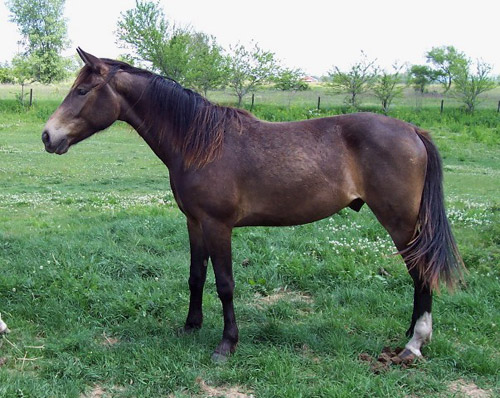
Black base with a mealy / pangare gene
Image from Apple Ridge Mountain Horses
Sooty / Smutty
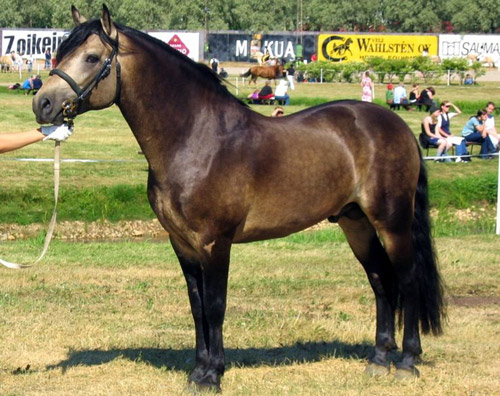
Black base with a sooty / smutty gene
Image from Rozpravka
White Patterns
Black horses can display all of the white patterns, making them incredibly colorful without any color at all.
Appaloosa
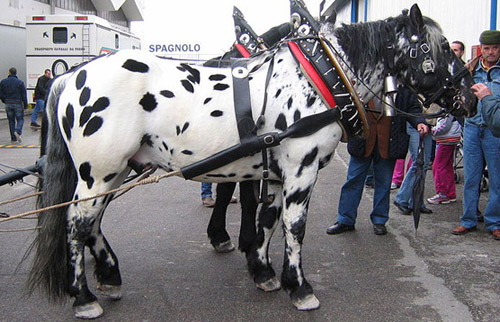
Black base with an appaloosa white pattern gene
Piebald Pinto / Paint

Black base with a pinto / paint white pattern gene
Black Roan / Blue Roan
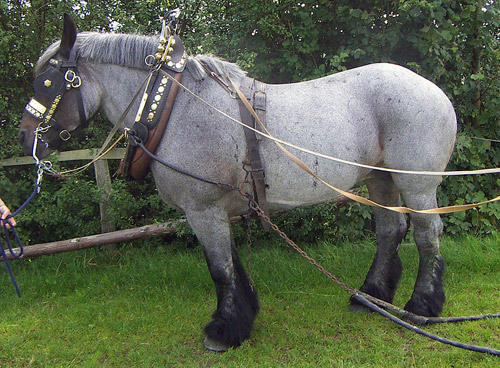
Black base with a roan white pattern gene
Image from Caronna

No comments:
Post a Comment